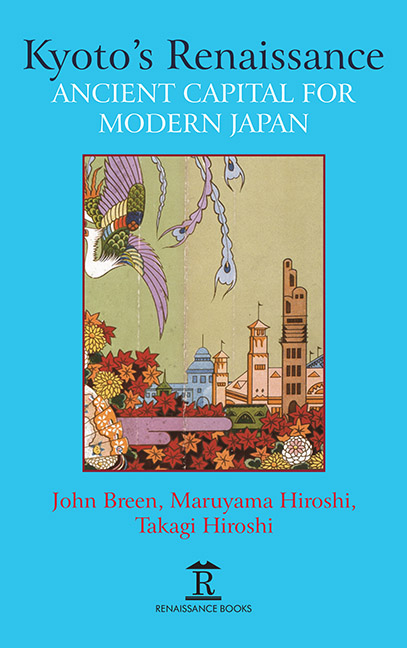Chapter 4 - The Modern Reorganization of Urban Space and Kyoto’s Historicity
Published online by Cambridge University Press: 30 April 2022
Summary
INTRODUCTION
JUST HOW WAS the modern reorganization of urban space in Japan accomplished? In considering this point, the city of Kyoto proves to be a case of very considerable interest. It goes without saying that Kyoto is no simple provincial city. Although it certainly confronted the risk of being reduced to this status with the relocation of the imperial capital to Tokyo in 1869, Kyoto came to be treasured as a city that embodied the “history” of the modern state of Japan. Yet, at the same time, modern Kyoto could have possessed an historical politics that was quite at variance with the history that was cherished by the modern state. The burden of the modern state's history is history imposed from the outside. History that inheres within the city, however, has exerted a powerful political force that has sought to counter this outside imposition.
Ever since the period of Warring States in the middle ages, Kyoto had maintained a solid structure of local governance; it was a “townspeople” (machikata) society. And that structure of local governance survived through the Meiji Restoration of the nineteenth century. We must pay due heed to the fact that local governance did not endure from pre-Meiji times as part of a dual structure that ran alongside the one-dimensional spatial dominance of the modern state; rather, local governance in Kyoto appears to have manifested itself, if anything, as a “conservative” political force seeking to resist that dual structure.
Above all, Kyoto's conservative tendencies were most conspicuous in city planning projects that sought to effect the modern reorganization of the city. From the viewpoint of the physical transformation of Kyoto's urban spaces, it was not so much the pre-Meiji to Meiji transition as it was the mid-Meiji era that witnessed the more drastic change. The Meiji structure of local governance was a legacy from before the Meiji period, and it proved a major force in resisting modern spatial transformations.
Of course, the emergence of conservative forces in Kyoto opposed to the modern reorganization of space was evident in all cities in Japan to some degree or another. Yet, in the case of Kyoto, those forces were so conspicuous as to constitute major obstacles to reorganization.
- Type
- Chapter
- Information
- Kyoto's RenaissanceAncient Capital for Modern Japan, pp. 95 - 122Publisher: Amsterdam University PressPrint publication year: 2020

